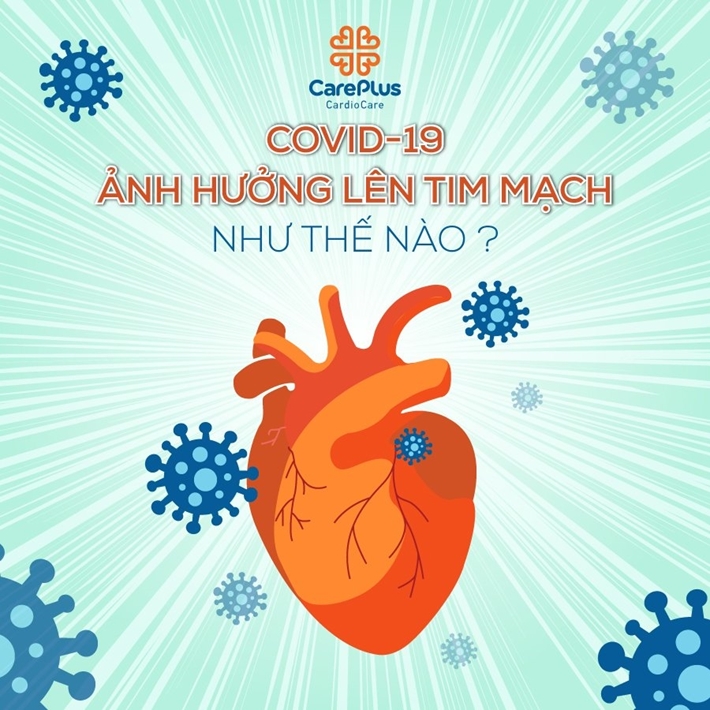4 facts about how badly Covid-19 leaves its impact on the heart
When we hear about a severe case of Covid-19 infection, even death, we often hear about and care about that person's underlying disease, especially heart disease. Cardiovascular disease does NOT make people more susceptible to Covid-19. The danger is that pre-existing cardiovascular disease makes Covid Easier: the risk of hospitalization, requiring more ventilation. Especially, the risk of death from Covid-19 increases 2-4 times if there is an underlying cardiovascular disease such as hypertension, diabetes, dyslipidemia, obesity.

8/12/2021 12:02:40 PM
In fact, according to statistics of Covid-19-related deaths, there are about 50% of patients with high blood pressure, 30% with diabetes, 20% with obesity, 10% with chronic heart failure.
So why does Covid-19 combined with the cardiovascular disease lead to such a bad outcome?
1. Covid-19 causes a heart with a pre-existing disease to "struggle" to work too hard
Infection with Covid-19 can cause high fever, rapid heart rate, and blood pressure can fluctuate a lot (very high or very low); severe cases cause severe lack of oxygen. These factors make even a normal heart work hard. Suppose it occurs on a heart with a pre-existing disease such as narrowing the blood vessels that feed the heart, severe valve regurgitation, persistent high blood pressure, etc. In that case, it will be difficult for the heart to meet the body's increased demands. The harder the heart works, the weaker it becomes, and as a result, the whole body collapses rapidly.
2. Covid-19 can directly damage the structure of the heart
When entering the body, the virus can directly attack the heart muscle. If myocarditis occurs on a large scale, it can cause a drastic reduction in the heart's ability to work and cause fatal arrhythmias. In addition, the virus can increase blood clots that block the blood vessels that feed the heart. This mechanism needs further investigation, but cardiac MRI shows that these lesions may persist even after the patient has recovered.
3. Covid promotes inflammation, which is already present in people with cardiovascular disease
Diseases such as high blood pressure, diabetes, obesity, and hyperlipidemia create a chronic inflammatory condition in blood vessels, forming atherosclerotic plaques that cause narrowing of blood vessels and creating an environment that is easy to form. A blood clot causes an embolism in a stroke or heart attack. Covid-19 creates an acute inflammation, not only on the heart but on the whole body. It strongly promotes pre-existing inflammation. It can be visualized as a slowly going downhill, now fitted with an engine to go downhill faster.
4. Disruption in outpatient treatment and monitoring
Social distancing limits the number of patients who come for follow-up visits, and many patients self-medicate without consulting a doctor. In addition, patients' unfamiliarity with actively monitoring symptoms, blood pressure, and unfamiliarity with the remote medical examination are also the reasons for reducing the effectiveness of treatment of underlying diseases, contributing to worsening cardiovascular status. The pandemic also shows the importance of patient-centred treatment, increasing their understanding and initiative in health monitoring.
Covid-19 can directly attack the structure of the heart, as well as increase the burden on the heart. If the body is healthy, it can be easily passed, but it can be a life-or-death challenge for someone with pre-existing heart disease. Early diagnosis and good control of the underlying disease with methods suitable to the pandemic context are important to increase cardiovascular patients' protection layer.